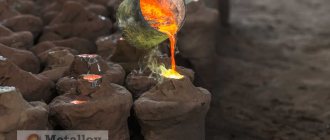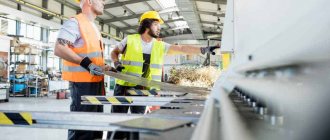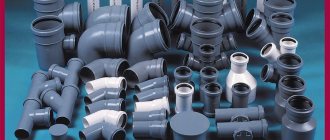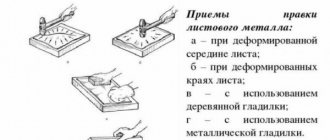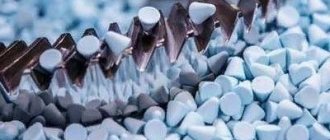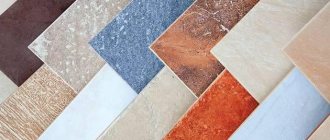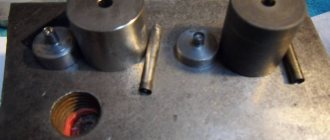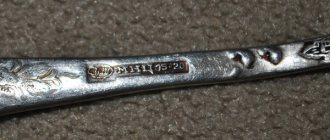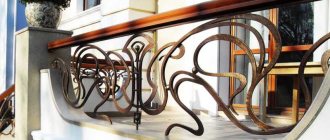Refractory materials are products made using mineral raw materials. They are characterized by a stable structure when exposed to flame, chemical reactions and long-term operation. They are used at industrial facilities, where technological processes involve the use of significant temperatures, and in residential buildings, where thermal apparatuses are used. Due to their high technical and operational characteristics, refractory materials are used in facilities where the requirements for reliability and durability are high.
Technical and operational characteristics
The main property of such materials is fire resistance, which expresses the temperature at which the deformation process begins. With respect to this value, the effectiveness of their use for certain purposes is considered. In addition to this parameter, others are also considered. Namely, how refractory behaves under the influence of strong heat:
- change in shape and violation of the integrity of the product under load at elevated temperatures;
- compression force parameters when heated, they reflect the stability of the structure;
- Neutral to chemical influences.
On a note! Fire-resistant materials can withstand significant temperatures, the minimum value is +1580 degrees C, the maximum is 3 thousand degrees C. Products that can maintain properties at the highest temperature parameters are called super-fire-resistant.
Fireproof cardboard MKRKL
Classification
Fire-resistant products are available in various forms: in plates, sheets, rolls and there is a group of unformatted materials. In addition, it is divided into types according to other characteristics:
By size and shape:
- wedges and straights of small, normal and large sizes;
- shaped simple, large-block, complex, weighing more than 60 kilograms;
- laboratory or industrial use.
By production method:
- production of refractory materials by sawing rocks from blanks;
- cast, made using liquid casting technology;
- production from plastic masses with subsequent additional pressing;
- formatting by pressing from powders;
- made by hot pressing;
- manufactured by thermoplastic pressing;
- formatted from hot melt.
According to deformation temperatures:
- from 1580 degrees C to 1770 degrees C - ordinary fireproof;
- up to 2 thousand degrees C – highly fire-resistant;
- up to 3 thousand degrees C – materials with the highest fire resistance;
- more than 3 thousand degrees C – super-fire-resistant.
By degree of porosity:
- the pores are open, their volume does not exceed 3% - especially dense;
- pores open up to 10% - highly dense;
- pores are open, volume up to 16% is dense;
- pores are open, up to 20% are compacted;
- pores are open, up to 30% - medium dense;
- total porosity up to 45% - low density;
- total porosity up to 75% - highly porous;
- total porosity more than 75% - ultra-porous.
Varieties by composition:
- oxygen-free;
- siliceous;
- silicon carbide;
- aluminosilicate;
- carbon oxides;
- glass-magnesite;
- aluminous;
- carbon;
- magnesium;
- oxide;
- magnesian-calcareous;
- zirconium;
- limestone;
- chromium;
- magnesia-silicate.
Basalt fireproof insulator
Purpose
Burning organic fuel - wood, peat, coal - creates enormous temperatures inside and on the outer surfaces of the stove. Fire regulations provide strict requirements:
- stoves made of ordinary bricks can be located at a distance from the walls exceeding one third of a meter.
- if the stove is made of metal and not finished with special materials (linings), then the minimum distance should be 1 meter;
- The outer surfaces of the stove, protected by a refractory lining, can be located at a shorter distance from the wall than conventional metal ones. The minimum for them is 70 cm.
The wishes of firefighters are not always feasible given the existing sizes and shapes of the home. A way out of this situation can be found by finishing with heat-resistant sheet materials. By enclosing the furnace on all three sides, you can accumulate heat in the resulting space around the furnace without fear of ignition.
Scope of application
Fire-resistant sheet materials are most in demand. Their purpose is determined by the size and set of properties of a specific product. The products are mainly intended for lining stove structures, boiler rooms, fireplaces, chimney ducts, thermal insulation of columns and heating boilers, in baths and saunas. Such protective screens can significantly increase the service life of structures and equipment as a whole, and their individual elements. Powder and molding products are widely used in instrument making to protect devices from temperatures and regulate operating conditions in accordance with technical specifications. Unmolded raw materials are used to produce special clothing, such as equipment for foundry workers.
Non-flammable refractory based on magnesium oxide
Manufacturers and prices
- Basalt fiber panels cost 1 sq. meter - from 390 to 690 rubles, depending on the decor of the front side, produced by ESCAPLAT;
Rolled fire-resistant non-woven material - cost of 1 linear meter from 112 rubles, produced by OgneuporEnergoHolding, LLC, Moscow;
The placement of stoves or fireplaces in the house creates pleasant warmth in the required quantity. The owners heat the house when they want and as much as they want; are not subject to the whims of district heating suppliers. Comfort is possible if safety rules are followed.
Peace of mind is guaranteed by the fire-resistant sheet materials enclosing the stove. The most intense combustion of fuel will not cause overheating of adjacent structures. The fireplace will warm the premises without causing fires.
OLM production
The production of refractory materials begins with the preparation of raw materials. Often workers manually pick out contaminants and impurities from it. Next, the raw materials are crushed and sifted. Then the powder and additives are mixed in strictly defined dosages. The mixture is formatted, dried under natural or special conditions, and fired.
You should understand! OLM are made from natural and artificial raw materials. The most compatible chemical and mineral substances are selected. The structure, density, porosity and strength of the required parameters are formed using a specific technology.
Fireclay heat-resistant bricks
Fire-resistant products differ according to the types of raw materials:
- Organic components. Such products are made from mineral raw materials and are able to withstand significant temperatures. But not all types. For example, expanded polystyrene is characterized by a low resistance to heat and fire, but it can be used to make a stove or fireplace with low heat.
- Inorganic components. This is the largest group of products, the range of fire resistance of which is large. The category includes mineral and basalt slabs, fiberglass, cellular concrete, vermiculite, honeycomb plastic, perlite. The cost of such products is not high - from 300 rubles per 1 m2.
- Composite compositions. This group includes asbestos-based products: asbestos-lime and asbestos-cement materials. This also includes foamed silica products and some others.
OLM for walls
OLM is used in the construction of buildings and structures. Such products are presented in a wide range. Concrete is in high demand; it is accessible, easy to use and safe for human health. Fire-resistant sheet material is often used for cladding walls and ceilings. This finish significantly increases fire safety and is used in facilities with high fire safety requirements. There are many varieties, the most popular types are:
- Cardboards and boards based on fiberglass and asbestos. This is the most cost-effective solution; the materials can withstand exposure to an open flame for half an hour, and heating up to +700 degrees C.
- Vermiculite. The heat resistance of the boards reaches +900 degrees C, they are chemically neutral, resistant to moisture, and do not react with organic solvents.
- Mineral slabs. They are in high demand due to the optimal combination of operational and fire-fighting qualities. They are based on white cement.
- Magnesite. The sheets are resistant to aggressive environments and strong heating.
- Rolls made of basalt fiber. An aluminum heat-reflecting coating is applied to the surface. They can withstand temperatures up to +900 degrees C. The fabric is light and flexible, optimal for installation on structures with complex geometries.
- Terracotta tiles and porcelain tiles. Air- and moisture-permeable tiles with good thermal insulation properties. They are easy to use and maintain; stains can be removed with ordinary detergents. They retain their structure and characteristics for decades and multiple heating cycles. They are both refractories and finishing materials.
There are OLMs that should not be used in rooms where people are, for example, basalt slabs with the addition of formaldehyde resins. When they reach +300 degrees C, they begin to release toxic substances and toxins.
Fireproof high strength brick
Types of materials
Refractory materials can be roughly divided according to the method of heat transfer:
- Heat reflective – aimed at reflecting infrared radiation into the room;
- Preventing loss due to its physical and chemical properties.
On video of fireproof materials for walls around furnaces:
But all of them can also differ in the type of raw materials from which they are produced:
- With organic components , for example, polystyrene foam materials, although their fire resistance is very low, they are best suited for walls near stoves with low heat;
- Inorganic is a broad class of non-combustible materials for insulating walls of a wide variety of fire resistance, including very flammable ones, such as wooden floors. These include stone and basalt wool, pressed into large slabs, fiberglass wool, lightweight cellular concrete slabs with fire retardant impregnations, honeycomb plastics, foamed perlite or vermiculite, and polypropylene. However, such a beautiful decorative thing as Leroy Merlin sheet plastic is definitely not suitable.
- Mixed type - these include asbestos-cement refractories, asbestos-lime or silica, foamed from a variety of inorganic substances.
Basic requirements for refractory materials
Many country buildings are built from wood, be it a cylindrical or frame house; without a stove or fireplace it is difficult to survive a frosty winter, so their arrangement is approached very carefully, and the materials placed around the stoves are chosen so that they are:
- Effectively and reliably prevented any attempted fires;
- Environmentally friendly, so that when heated they do not release harmful substances into the home air.
Information from this article will help you understand what composition of mortar for plastering a stove exists and is most often used.
But what are the dimensions of a standard oven brick can be seen here.
You may also be interested in learning about what kind of brick is used for laying stoves.
For walls around stoves
A long time ago, people used asbestos sheets to line the walls around stoves, but it turned out to be very harmful to health and the environment - its microparticles can enter the lungs or be deposited on things, which leads to serious illnesses, and with strong heating they also release carcinogenic substances. substances. Therefore, the best materials can be considered:
Fire-resistant plasterboards. can act as the basis for covering walls around hot stoves, and for decoration, porcelain tiles of the most unusual colors can be used.
The sheets have the following characteristics:
- Fire resistance – up to 30 minutes of fire resistance;
- Does not ignite for up to 1 hour even after a fire has formed;
- Slab parameters – 120 x 250 x 1.25;
- On the front and back sides there is cardboard treated with gypsum, inside there are fiberglass threads that will resist fire;
- The ends of the sheets are covered with cardboard material, and there is a joining chamfer along them;
- Fastening can be done either using adhesives or self-tapping screws.
Fireproof minirite slabs. The material has excellent heat-resistant properties and is produced exclusively from environmentally friendly substances, including:
- Compositions of white or gray cement make up up to 90% of the total material;
- Included are mineral fibrous materials;
- For strength and durability, fiber reinforcing boards are used.
Asbestos fiber is completely excluded from the composition, which improves the quality of the material for a home stove. It is easy to fix it to the wall with screws close to the wall itself; for reliability, you can mount 2 sheets of minirite. Note! When installing, it is necessary to leave a small distance, since the material may increase in size when heated. For other walls, you can choose a similar decorative brick finish.
Protective stainless steel sheets are a slightly expensive but reliable fireproof material that can be used to protect not only the walls of the house, but also the basement when installing a heating boiler. But in order to provide the greatest protection, special fiberglass with thermal protective properties should be placed under the stainless steel - the structure will reliably protect the house from any attempts to start a fire. Choose the substrate carefully so that it does not contain harmful phenolic resins; when heated strongly, they release substances that are too hazardous to health.
Heat-resistant material made of basalt fiber pressed into mats - it is hygroscopic, has a high degree of resistance to fire, and can remain unchanged at temperatures up to 900 degrees Celsius.
Superisol sheets for wall insulation are a practical and versatile thermal insulation material, with low specific gravity and excellent strength and durability.
Insulation of walls with heat-resistant terracotta tiles . The main advantage is the complete environmental purity of the material; they do not contain any chemical coloring compounds, and have excellent vapor permeability and fire-resistant properties. Glazed ceramic tiles for interior wall cladding also look beautiful.
For finishing walls under a boiler
A gas or steam boiler heats up very much to ensure heat transfer to the house at the required temperature of the carrier. Therefore, experts recommend equipping walls with porcelain tiles with a high degree of fire resistance. The characteristics are the most reliable - it can withstand high temperatures without visible signs of fire.
It is also possible to use sheets made of fibers impregnated with gypsum; installation is very easy by gluing them to the walls, but it is not recommended to use plastic brick panels for interior wall decoration, since they do not meet fire safety requirements.
Recently, sheets made of xylolite fiber have begun to gain popularity, since they meet all environmental properties in terms of cleanliness and the absence of any harmful emissions, even at elevated temperatures of about 1000 degrees. The material is also very flexible; these properties make it possible to sheathe the most curved wall surfaces. It can withstand humid and damp air perfectly, its main characteristics do not change.
But what solution should be used for plastering a home stove and how to choose it is described in great detail in this article.
OLM for a bath
In saunas and bathhouses, protective fireproof screens for stoves are installed. Thermal insulation structures are made from various refractories. They offer more than two dozen composites and ceramics on sale. They are resistant not only to high temperatures, but also to aggressive gas environments. The materials were initially developed for use in critical industrial environments, and then adapted to everyday use. According to TU and GOST they are classified according to the following positions:
- Silica. They are made from high purity minerals and quartz. Their content in materials reaches 95%. Quartz-based products can withstand temperatures up to 2 thousand degrees C and aggressive influences.
- Alumina-based refractories sintered into blocks. The base can make up up to 90% of the total composition. This category includes fireclay and mullite bricks. This is the optimal solution for fireplaces and stoves running on natural fuel.
- Magnesian. The products are made from oxides of various metals through sintering at high temperatures. It is resistant to aggressive environments and temperatures up to 2 thousand degrees C.
- Minirite slabs. They are made from environmentally friendly raw materials and have high heat-resistant characteristics. Up to 90% of the composition is cement reinforced with fibrous materials. When heated, they increase slightly in size, so during installation you should leave small gaps between the sheets.
Important! Officially, metal is not a fire insulator, but it is often used as such to protect building structures from the heat and flames of stoves and fireplaces. Steel has the highest heat reflection coefficient parameters; it is not afraid of sudden and significant temperature changes.
Mullite heat-resistant brick
